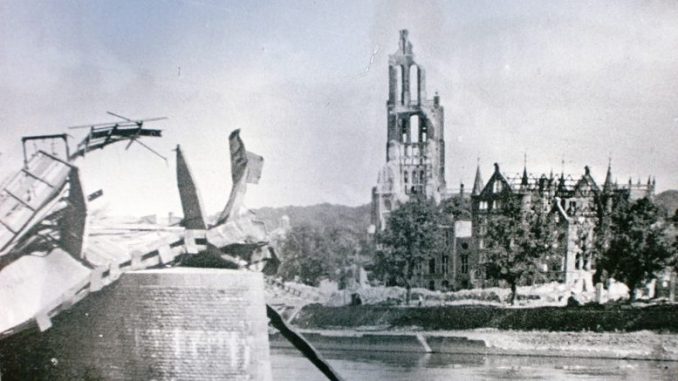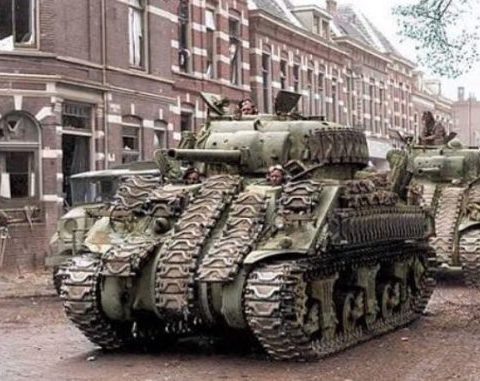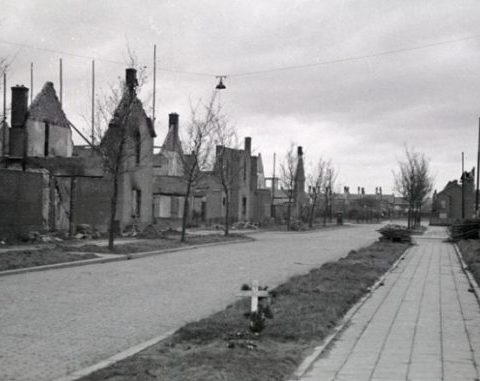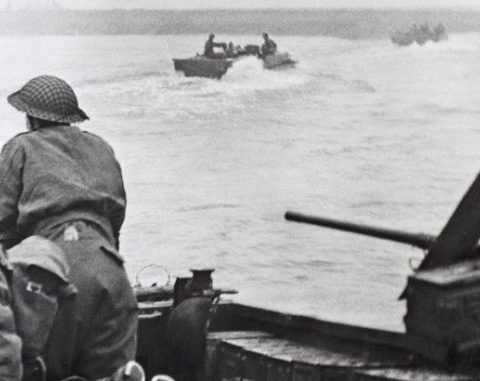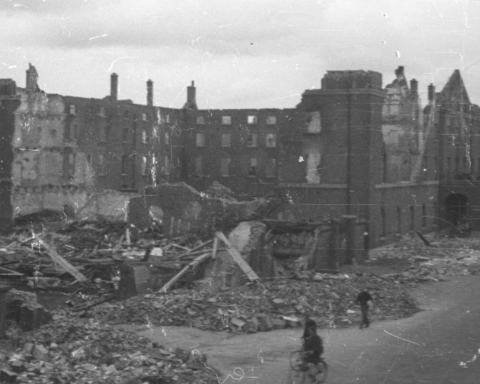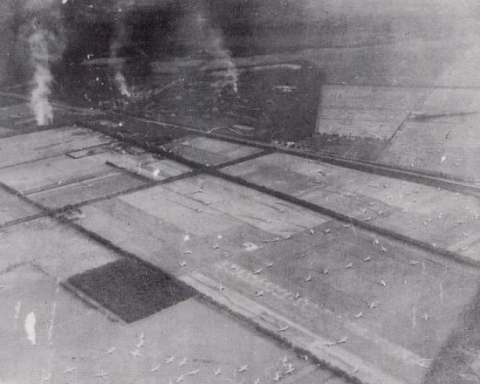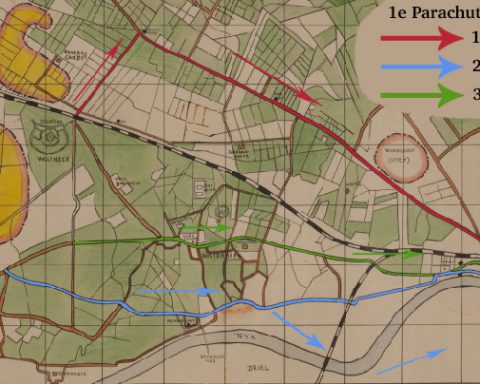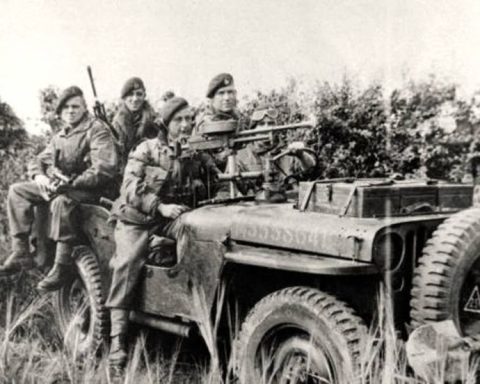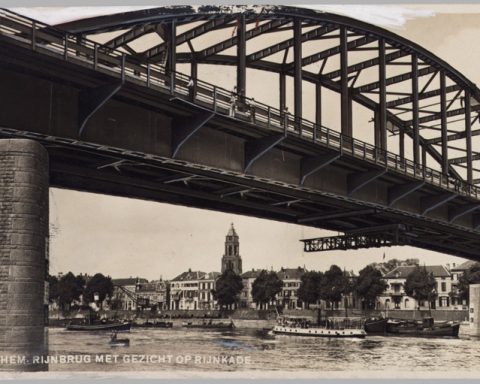The liberation of Arnhem cannot be separated from the bitter fighting in September 1944 during the Battle of Arnhem.
Operation Market Garden aimed to force an Allied breakthrough across the Rhine. Arnhem turned out to be a bridge too far. While British and Polish troops defended the perimeter in Oosterbeek on September 23 1944, the German high command in Arnhem ordered the evacuation of the front city of Arnhem.
On September 25, 1944, the population of Arnhem left the city on the instructions of the occupying forces. To Apeldoorn, Enschede, Zwolle, Friesland and other places. Arnhem had become a ghost town.
Only the population of the neighbourhood of Geitenkamp was allowed to stay. In the eyes of the Germans, Geitenkamp was far enough away from the fray. In addition, emergency services such as police officers and firefighters were left behind in the city.
There were several reasons for the Wehrmacht to evacuate the people of Arnhem. The official reason was to protect the population from the violence of war.
However, the real reason was that the Germans expected the Battle of Arnhem to be far from over. Civilians would, in the eyes of the Germans, get in the way at best, and at worst help the Allies in their advance.
At Driel there were 1,000 Polish paratroopers who had already received reinforcements from British tanks from Nijmegen. At the time, the Allies had already decided to withdraw the British paratroopers from Oosterbeek over the Rhine, but the Germans did not yet know that.
After the war against British interrogators, the German General Bittrich of the SS-Panzerkorps in Arnhem stated that the Germans were baffled that the Allies left it at that. If they had been in the Allies’ shoes, they wouldn’t have given up.
Because the Germans expected a new attack on Arnhem, the city was further strengthened with German troops. Only after the Allies bombed the Rhine Bridge in October 1944, did the Germans realize that there was most likely no new attack near Arnhem.
But the Germans were not entirely sure. That is why Arnhem remained a ‘front city’. To be sure, the Germans kept many troops ready in Arnhem and the surrounding area, and the population was not allowed to return.
Arnhem looted
Special Bergung commandos plundered the entire city at that time. In all bombed cities in Germany there was a great shortage of furniture and crockery. Everything that had value, and that was quite a bit, was transported to Germany in trucks.
On November 6, 1944, Peter Berends from Velp was given permission to pick up paper for his father’s print shop in Arnhem and was therefore one of the few witnesses to the looting.
“We couldn’t take a look at St. Eusebius Church, because the Germans had given us strict instructions to drive directly to our goal. We saw all the more pillaging as we drove through Ketelstraat and Vijzelstraat in the direction of Rijnstraat.”
“Germans walked in and out of shops and homes everywhere to see if they could find something to their liking. The craziest things they took with them. For example, I saw a senior Luftwaffe officer come out of a store carrying a stack of women’s corsets. ”
“At the same time I saw a large open army truck with trailer on the other side of the street, which was packed by a number of Germans with cupboards, beds, stoves and other household goods. This was really brutal robbery on a large scale!”
“The many dead dogs and cats that lay along the streets were a sad sight. The poor animals had apparently been left behind during the evacuation and died of hunger.”
The Island
In the autumn of 1944, a somewhat diffuse military situation arose south of the city. The Americans were in Nijmegen. The Germans in Arnhem. In between was what the Allies called “The Island”: the area between the Waal and the Rhine.
In that area, the Germans controlled Elden, Malburgen and Huissen. American and later British troops were in Driel, Elst and Bemmel. Skirmishes took place throughout the fall and winter of 1944.
It was not uncommon for an Allied patrol to encounter a German patrol, after which it turned into a firefight.
The western sector of The Island was defended on the German side by “Landstorm Nederland”, consisting of Dutch SS volunteers. That sector was defended on the Allied side by the Dutch armed forces of the Princess Irene Brigade. It resulted in the bizarre situation that the Dutch fought against the Dutch.
In order to further bother the Allies, German troops blew up the dike on December 2, partially flooding The Island. It did not make the situation any better.
After the war, British soldier Rex Flower described it as follows:
“Water, water everywhere and it just got worse before it got better. We shared The Island with the enemy. I assumed he hated it as much as we do. There was mud everywhere. It was going to be a wet, cold and later frosty and frozen winter.”
Meanwhile, artillery fighting took place back and forth in the winter of 1944. The Germans fired grenades from Arnhem at Nijmegen. The Americans fired artillery shells back in the other direction. Much of the war damage in Arnhem was caused by this shelling.
While the front was moving all over Western and Eastern Europe, and the Germans were retreating everywhere, the situation south of Arnhem was stable until the spring of 1945.
That changed in early April 1945 when the Allies decided to advance here too.
The liberation of Arnhem:
Part 1: After the Battle of Arnhem
Part 2: The Liberation of Arnhem South
Part 3: The 2nd Battle of Arnhem
Part 4: Liberation of a ruined city
Part 5: Return in a lifeless city

